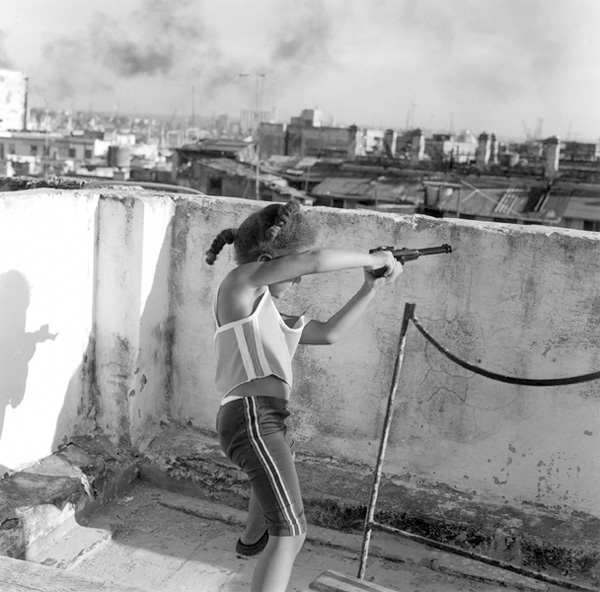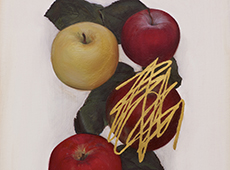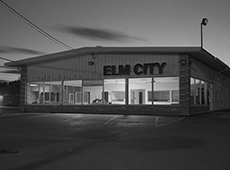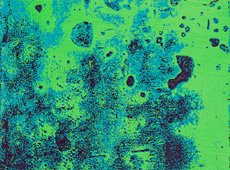I wait and watch for a scene to develop and hopefully capture a slice of life, or a moment which stops time and presents a question or mystery. How does a young girl know the posture for a violent act? Does it happen only in Havana—or is it possible in any American city? Who does the gun mean to threaten?

© Karen Keating, “Rooftop, Cuba Street.” Courtesy of the artist.
In 2000 I made my first photo trip to Cuba. I was immediately taken by the character of Old Havana, the people on the street, the architecture and especially the sense of stopped time. Every turned corner presented a photo opportunity.
Late one afternoon, the wife of a family I was photographing asked if I wanted to view Havana from the rooftop. I had no expectations beyond an interesting building height view of the city, maybe an interesting sky. Instead, we climbed the three flights of stairs and entered onto a rooftop “family room.” Pets, toys, tricycles and a few children were playing random games. As I looked around, I focused, took a light meter reading and watched a young boy and girl playing with toy guns. I snapped 2 or 3 photos, took in the view and two weeks later, after developing the film, I realized that I had an edgy document of serious “play.” One of my high school photo students on seeing the image asked if I had been to Los Angeles.
Planning photographs seldom yields “keepers” for me. I wait and watch for a scene to develop and hopefully capture a slice of life, or a moment which stops time and presents a question or mystery. How does a young girl know the posture for a violent act? Does it happen only in Havana—or is it possible in any American city? Who does the gun mean to threaten?
I wait and watch for a scene to develop…a moment which stops time and presents a question or mystery. How does a young girl know the posture for a violent act?”
This image became part of my book, Cubans: Watching and Waiting. The title of my book was the result of looking at the entire set of images and realizing how many were made by watching the street and waiting for something…a friend, an opportunity, a change in living conditions or just to see what might happen that day.
Karen Keating lives, works and teaches just outside of Washington, DC. She teaches photography at the Field School and Photoworks (where she has been an instructor since 1984).
Subscribe to Tilted Arc
If you like this story, please consider subscribing. We are sticklers for privacy.
We will never sell or share your e-mail address.



